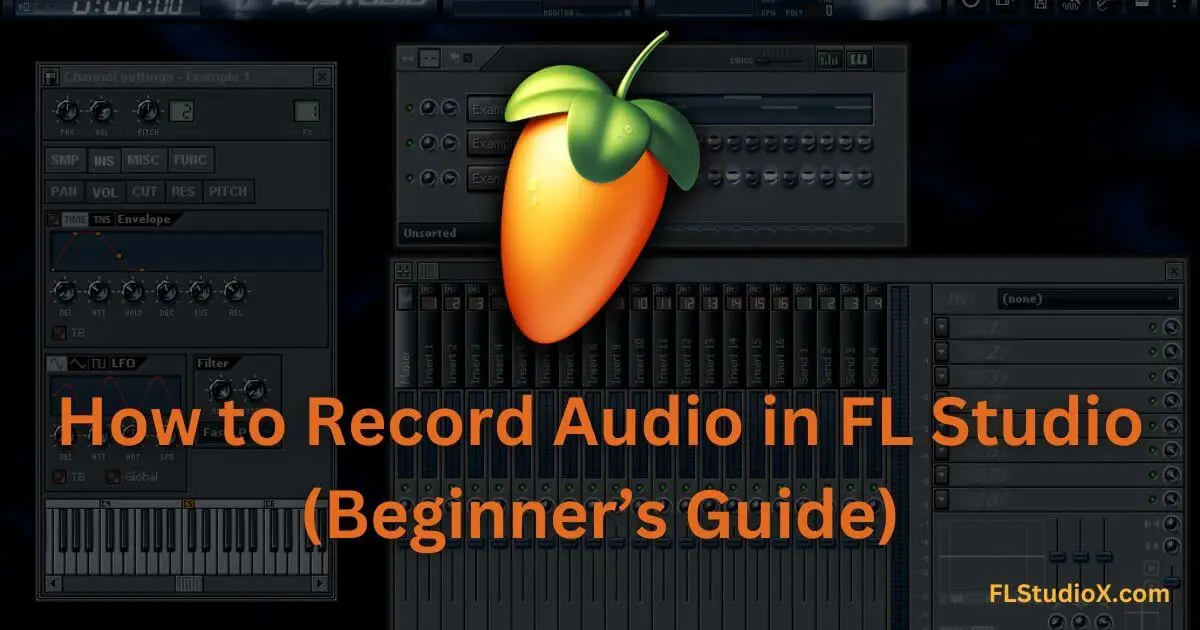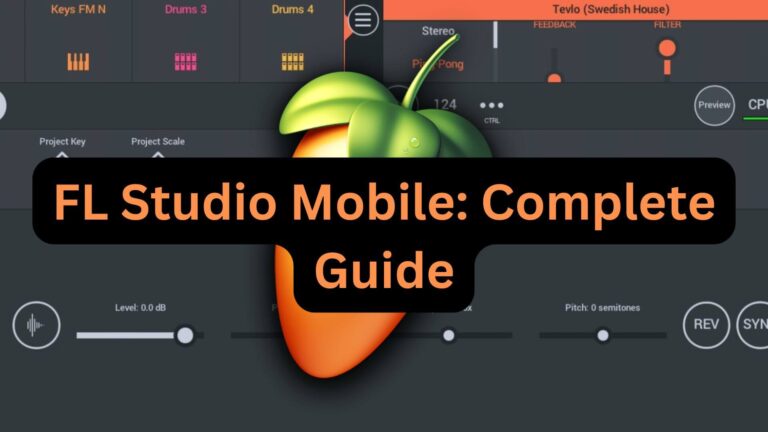
Recording audio in FL Studio doesn’t have to be complicated. With the right setup and a few tips, you can capture clean, professional-quality recordings. This step-by-step guide will walk you through the process while addressing common issues like configuring inputs, reducing latency, and improving audio clarity.
Step 1: Configure Your Audio Settings
Before anything else, you’ll need to set up FL Studio to work with your audio interface or input device.
1. Select Your Audio Driver
- Open FL Studio, then go to Options > Audio Settings.
- Under Device, choose and Set ASIO driver (e.g., FL Studio ASIO, ASIO4ALL, or your audio interface’s dedicated driver). ASIO drivers are recommended for the best performance and low latency.
2. Select Your Input/Output
- Click on the Input/Output settings in your audio interface driver.
- Assign the correct Input for your microphone or instrument and the Output for your headphones or monitors.
Common Issue: If you’re not hearing sound or FL Studio isn’t recognizing your microphone, ensure your audio interface is properly connected and selected as the input device in both your computer’s sound settings and FL Studio.
Step 2: Reduce Latency During Recording
Latency occurs when there’s a delay between playing or singing and hearing it in real-time.
How to Fix Latency:
- Go to Options > Audio Settings.
- Reduce the Buffer Length to a lower value, such as 256 samples or less. This minimizes the delay during recording.
- Test your setup—if you hear clicks or pops, increase the buffer slightly to get a balance between low latency and smooth playback.
Pro Tip: Some latency is unavoidable with slower computers or built-in soundcards. Using a dedicated audio interface with an ASIO driver minimizes this issue.
Step 3: Prepare the Mixer and Recording Tracks
FL Studio’s mixer is the central hub for setting up your audio recordings.
- Open the Mixer (F9) in FL Studio.
- Select an Empty Track where your audio will be recorded.
- On the right side of the mixer window, locate the Input Source dropdown and select your microphone or instrument input.
Common Issue: If the input dropdown is grayed out, make sure you’ve selected an ASIO driver in the audio settings.
Step 4: Arm the Track and Start Recording
Once your input source is set, it’s time to start recording.
Set Up for Recording:
- Click the disk icon on your chosen mixer track to arm it for recording.
- Enable monitoring if you want to hear yourself during the recording (this may increase latency, so adjust your buffer settings).
- Press Record (R) on the transport bar, then choose Audio into the playlist as an audio clip.
FL Studio will record your audio and place it directly into the playlist as a waveform.
Step 5: Improve Recording Quality
Tips for Clean Recordings:
- Use a pop filter/mic shield: Reduce plosives and unwanted noise when recording vocals.
- Record in a quiet space: Limit background noise by choosing a quiet environment.
- Adjust Gain Levels: Ensure your microphone gain is set properly. Aim to keep levels between -6dB and -12dB to avoid clipping.
- Enable Noise Reduction: Use FL Studio’s Edison tool or a third-party plugin to remove background noise from your recordings.
Pro Tip: Always record at a consistent distance from the microphone for even audio levels.
Step 6: Edit and Enhance Your Audio
After recording, you can polish your audio using FL Studio’s editing tools.
- Add effects like EQ, compression, and reverb via the mixer to refine the sound.
- Use Edison (FL Studio’s audio editor) to cut, trim, and clean up recordings.
- Adjust volume and pan settings on the mixer to balance the audio in the mix.
How to Record Vocals in FL Studio 24 – Video Tutorial
Troubleshooting Common Challenges
- Clipping or Distortion: Lower the input gain on your mic or audio interface to prevent audio peaks.
- Background Noise: Record in a quiet space and use plugins to reduce hiss or hum.
- No Input Signal: Double-check your mic is selected in the input settings and that it’s properly connected.
- Latency Issues: Use an ASIO driver and adjust the buffer settings as needed.
Final Thoughts
Recording audio in FL Studio opens up endless possibilities for creativity, but it starts with proper setup and preparation. By following this guide, you’ll ensure your recordings are smooth, clean, and professional.
Want better recordings? Invest in quality gear (microphones, pop filters, headphones) to take your audio to the next level!
Have fun experimenting—your next masterpiece is just a recording session away! 🎛️🎤






